Sculpture of Gertie the Duck: Milwaukee's Symbol of Hope in WW2
Introduction
Text-to-speech Audio
Images
Front cover of Romano's and Georgiady's international bestselling children's book, "Gertie the Duck."
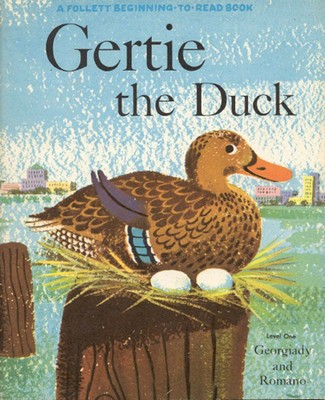
Gertie the Duck by sculptor Gwendolyn Gillen
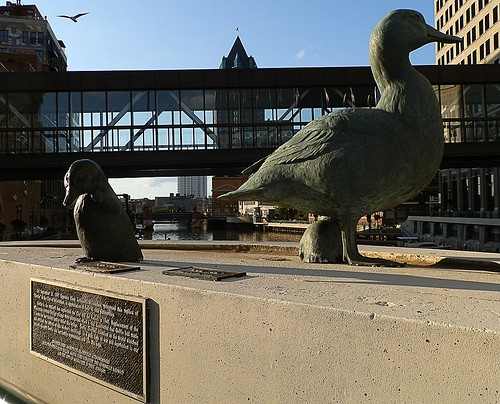
Photo from the television program General Electric True. Jan Shepard plays a Milwaukee newspaper reporter who is assigned to write a story about a mother mallard who has built her nest on a river piling in Milwaukee's downtown.
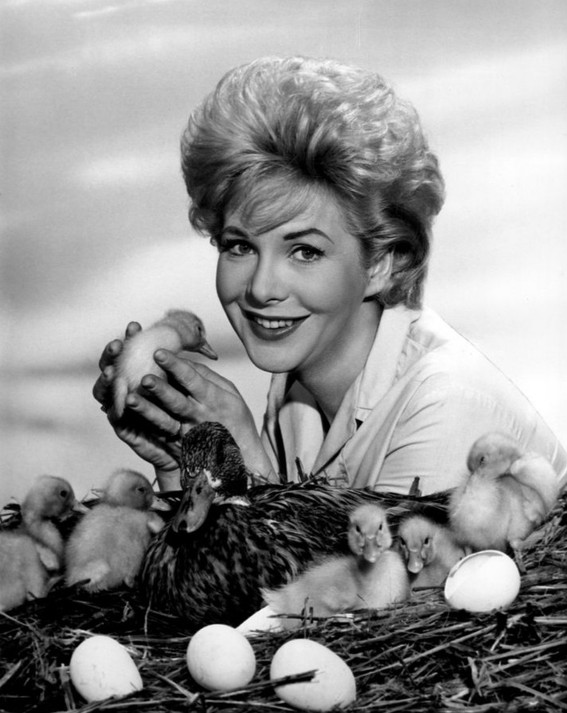
In April 1945, Gertie the Duck began to lay her eggs on a piling just south of the Wisconsin Ave. bridge in downtown Milwaukee. Photo from the Journal Sentinel Files.
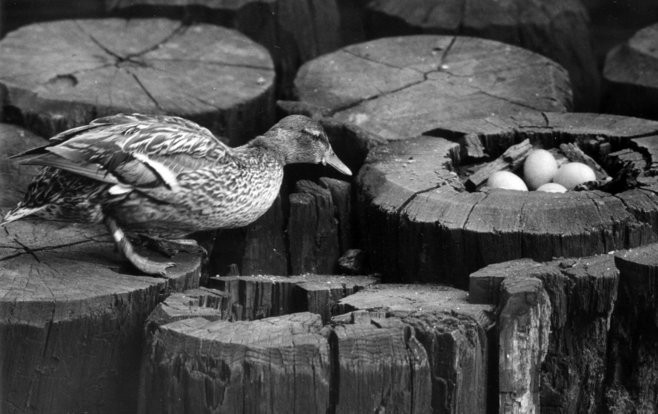
Another 1945 photo of Gertie from the Journal Sentinel files
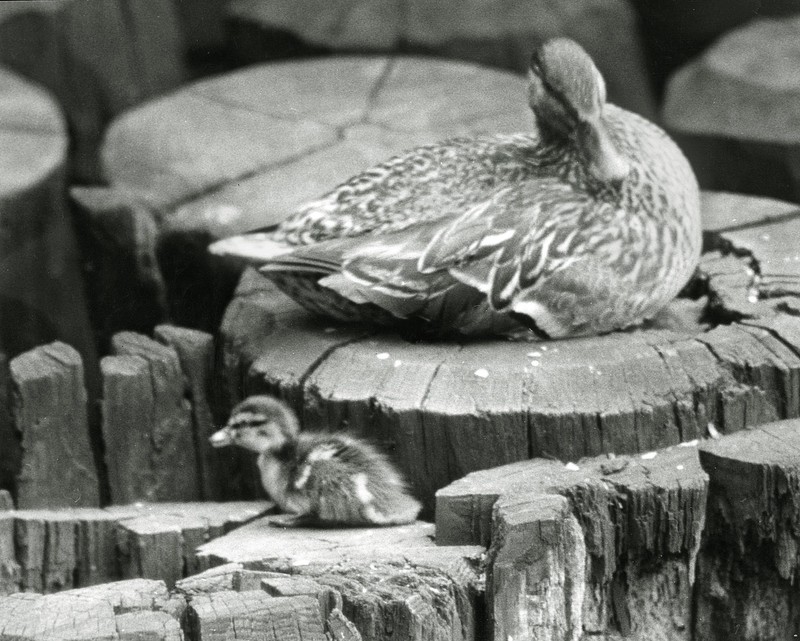
Backstory and Context
Text-to-speech Audio
The Story of Gertie the Duck
Few are really sure why Gertie the mallard had chosen a white oak wood piling surrounding the Wisconsin Avenue bridge to build a nest. First of all, the Wisconsin Avenue Bridge in Spring 1945 was bustling with noisy streetcars and commuters. Moreover, Gertie’s choice of a nest was not a place flourishing with nourishment, as a small clump of mud nearby was all she had. Lastly, in the Milwaukee River below her nest, oil-soaked wooden piles offered considerable pollutants, not exactly the ideal birthing place for little hatchlings.
Outdoor writer Gordon MacQuarrie of the Milwaukee Journal first reported about Gertie’s unlikely nest in April 1945. In MacQuarrie’s article, he noted that Gertie was caring for three eggs. A daily columnn in the Journal drew significant attention thereafter, and it was a great reprieve from the horrors of the war overtaking most newspapers. On April 28th, the Journal reported Gertie’s fourth egg; she would lay nine in total, though three disappeared. Crowds began amassing on the bridge to see Gertie and her eggs, and the crowds grew to such mass that traffic was sometimes stalled. Throngs of people began checking the daily progress of Gertie, and the columnn, a total of 37 articles that spring, continued Gertie’s coverage with nationwide popularity.
On Mother’s Day that year, people sent cards and poems to Gertie. The Boy Scouts formed a Gertie Patrol, and the Wisconsin Humane Society assigned an officer to keep watch. The city postponed a bridge repair, and even on VE Day on May 8th, the massive parades in Milwaukee quieted to a whisper (literally—you could hear a pin drop) as the crowds passed by Gertie.
The city mobilized around Gertie and her egg’s protection. To protect the young ducklings’ wings once they hatched, the city planned on dumping two million gallons of fresh water into the river to dispel the oil and pollution. A nearby shanty provided cornmeal and clean cottons. Eventually, with the nation watching as well as the Boy Scouts and Humane Society watching around the clock, Gertie gave birth to six ducklings between May 30th and May 31st. Readied rowboats in the water ensured the family was kept together, despite a harsh storm the night of the hatching. Soon after, Gertie and her ducklings were relocated to a Gimbels display window where a 24-hour nurse provided care and climate control. The family was then moved to the Juneau Park Lagoon along Lake Michigan.
Inspired by the response as well as MacQuarrie’s columnn, the Associated Press and United Press International ran stories of Gertie through newspaper photographs, newsreels, military newspapers, and radio networks. A London newspaper gave Gertie a cover story, and Life Magazine featured Gertie in its June 18, 1945 issue. Estimates show that nearly two million people came to see Gertie during this time. In the summer, Gertie and her ducklings were released into the wild.1
Legacy and Bronze Statue
The popularity of Gertie’s story serves as an example of the nationwide sentiment and weariness toward the end of WWII. The war was ending, but Gertie the mallard and her family were just beginning. They gave millions of people hope and optimism that, despite the horrors of the time, life would always move onward with preciousness and fragility.
A 1959 children’s book by Nick Georgiady and Louis Romano, titled “Gertie the Duck,” sold more than 800,000 copies and was translated into several languages, including French, Dutch, and Japanese.
In 1997, sculptor Gwendolyn Gillen created a four-foot-tall bronze statue of Gertie, which was installed on the Wisconsin Avenue Bridge at the location where Gertie was first spotted and where her chicks hatched.2
Cite This Entry
Admin, Clio. "Sculpture of Gertie the Duck: Milwaukee's Symbol of Hope in WW2." Clio: Your Guide to History. August 3, 2019. Accessed April 22, 2025. https://theclio.com/entry/18898

